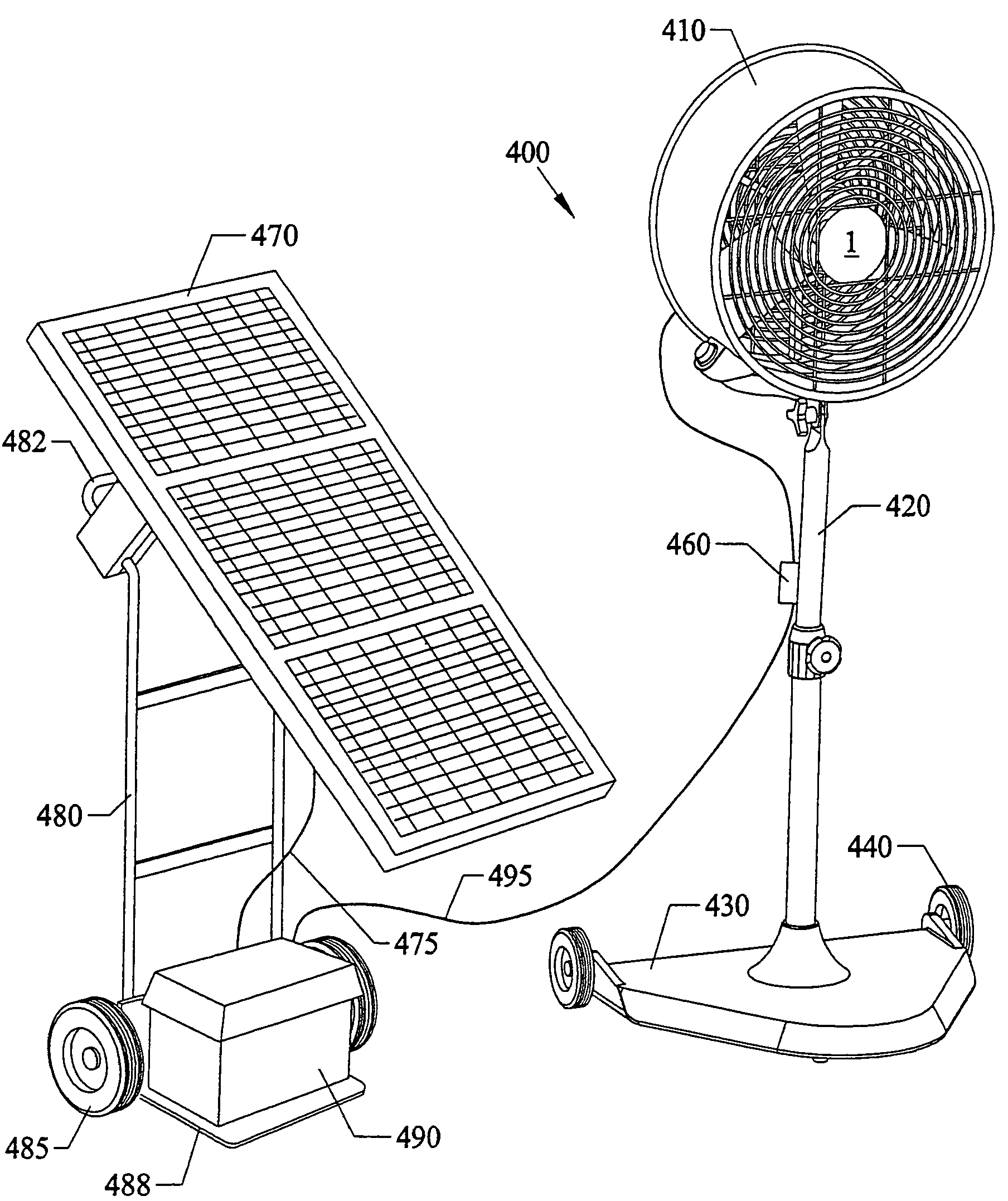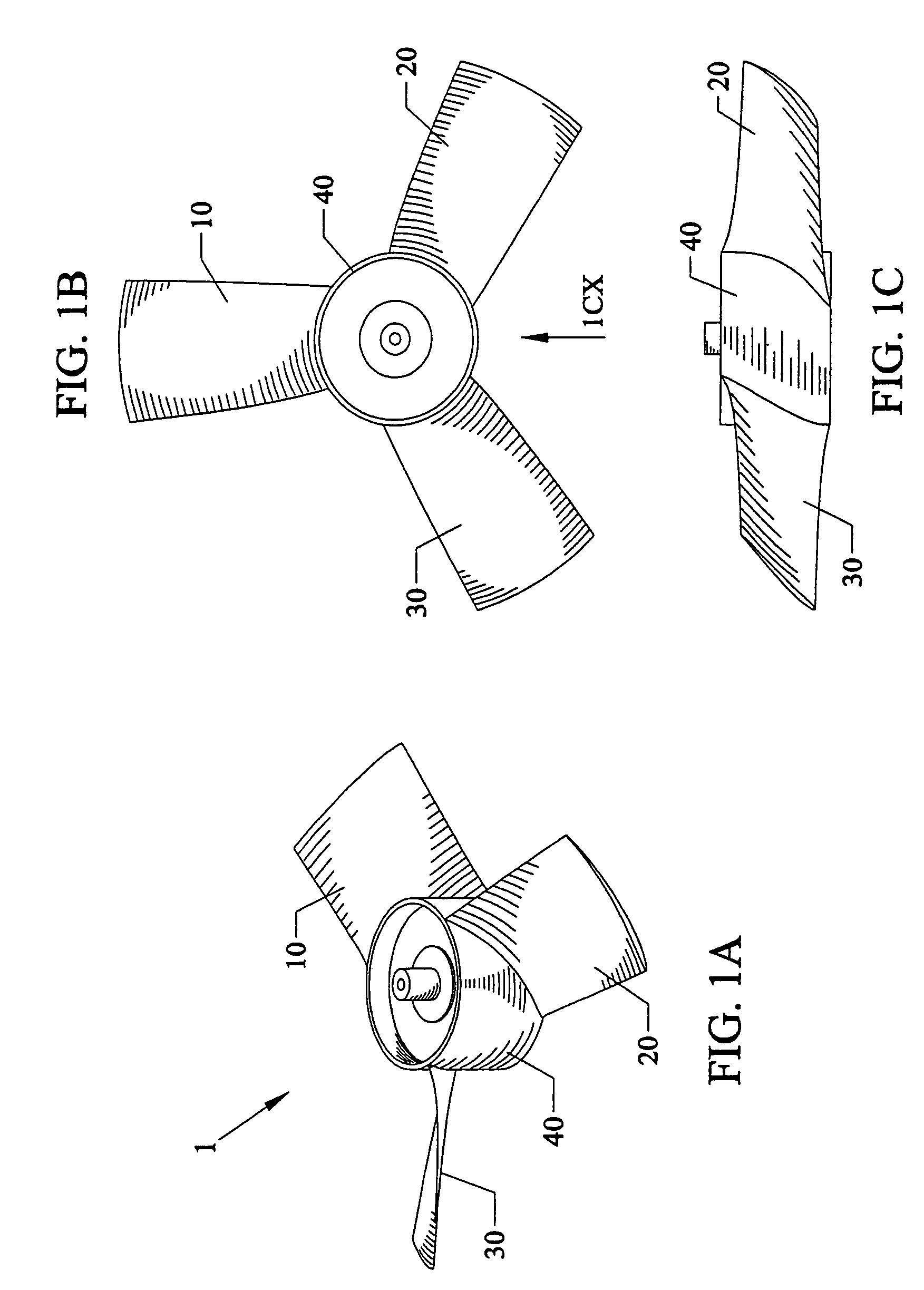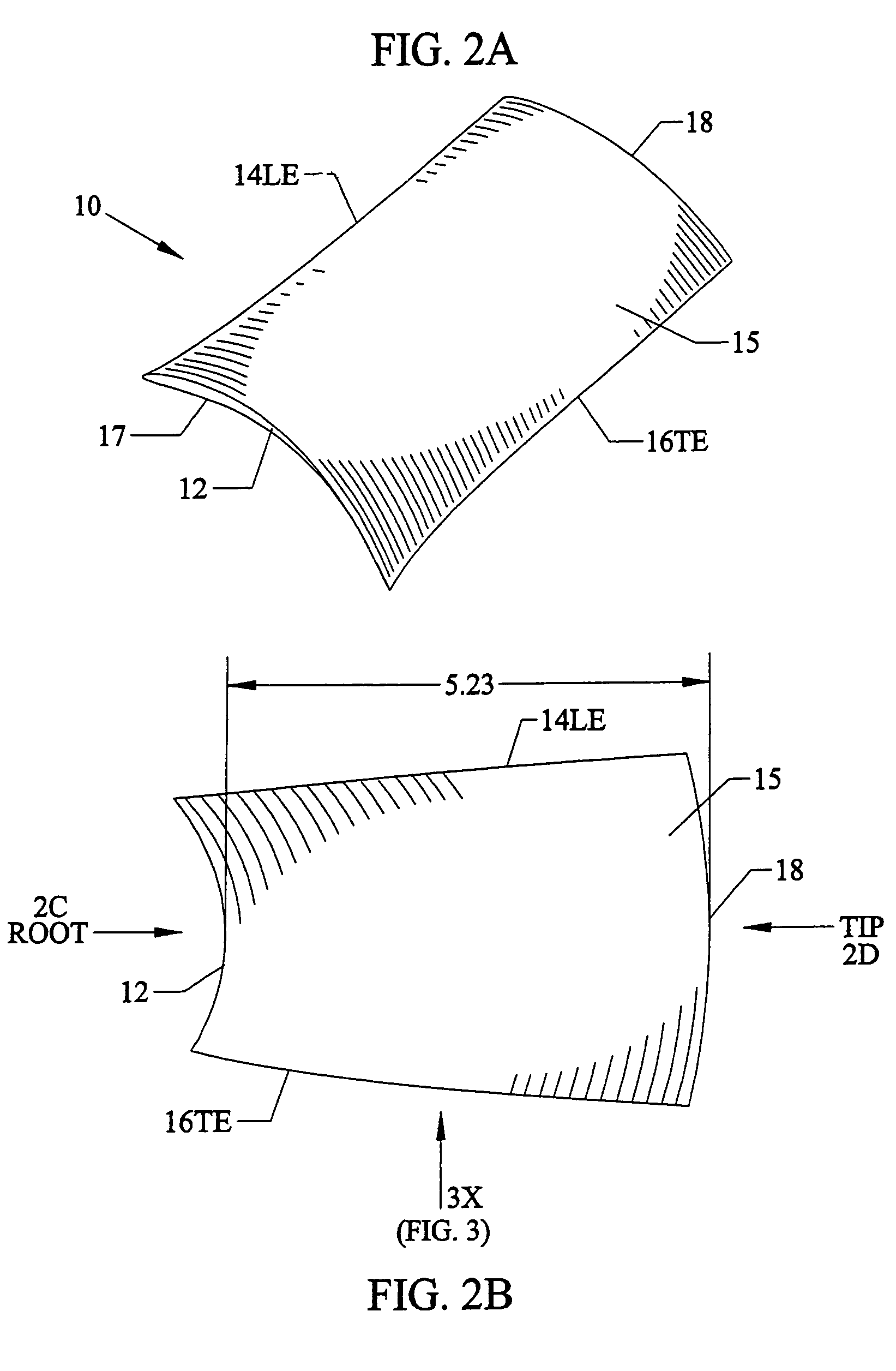High efficiency solar powered fan
a solar energy and fan technology, applied in the direction of propellers, photovoltaics, water-acting propulsive elements, etc., can solve the problems of increasing the power requirements of existing building electrical supplies, poor cooling conditions within the building, and increased utility costs for air conditioning systems and cooling systems. to achieve the effect of maximizing the removal of air
- Summary
- Abstract
- Description
- Claims
- Application Information
AI Technical Summary
Benefits of technology
Problems solved by technology
Method used
Image
Examples
embodiment 200
[0105]FIG. 6 is a perspective exterior view of a roof alcove exhaust embodiment 200 incorporating the fan 1 and blades 10, 20, 30 of the preceding figures with a solar power source 100. FIG. 7 is a view of the separate components of FIG. 6.
[0106]Referring to FIGS. 6-7, the novel fan 1 can be mounted with blades 10-30 facing to exhaust sideways in a housing 240 inside of an opening 225 in a gable side wall 220 below a roof 210. The outer hood 230 with louvers 235 can cover the opening 225 in the gable side wall 220. The fan motor 50 can draw power through cable / power line 55 from a rooftop mounted solar power source 100, which can include two PV (photovoltaic) panels 110, 120 in a frame 130 that can be directly attached (by screws, and the like) into the roof 210. An optional stand 140 can be used to elevate the solar panels 110, 120 and frame 130 above the roof 210. Additional power can be provided by another solar power source 150.
Roof Top Exhaust
[0107]FIG. 8 is another perspective...
embodiment 400
[0123]FIG. 10 is a perspective front view of a portable fan 400 incorporating the fan 1 and blades 10, 20, 30 of the preceding figures with a solar power source 470. FIG. 11 is a rear view of the portable fan 400 of FIG. 10. The portable fan embodiment 400 combines a high efficiency fan 1 in a cylindrical housing 410 with a portable stand that can consist of a telescopingly height adjustable pole 420 with triangular shaped base 430 having wheels 440. The triangular shaped base 430 can have a rear generally straight edge 432 with wheels 440 mounted at each end, angled sides 434, 436 meeting at a rounded apex 438. The shape of the base 430 allows the fan 400 to be easily tilted back in the direction of arrow B so that a user can move the fan 400 with only two wheels 440 by gripping the handle 450 that is attached to the upper pole 420 of the portable fan 400.
[0124]A handtruck type stand 480 having an L-shape with wheels 485 on the lower end and hand rails 482 can support solar power p...
PUM
 Login to View More
Login to View More Abstract
Description
Claims
Application Information
 Login to View More
Login to View More - R&D
- Intellectual Property
- Life Sciences
- Materials
- Tech Scout
- Unparalleled Data Quality
- Higher Quality Content
- 60% Fewer Hallucinations
Browse by: Latest US Patents, China's latest patents, Technical Efficacy Thesaurus, Application Domain, Technology Topic, Popular Technical Reports.
© 2025 PatSnap. All rights reserved.Legal|Privacy policy|Modern Slavery Act Transparency Statement|Sitemap|About US| Contact US: help@patsnap.com



